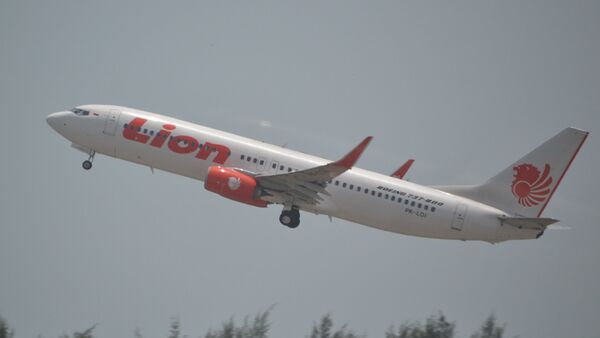Boeing, based in Chicago, is preparing to issue a safety bulletin to companies operating its new 737 MAX airliners, the model involved in the recent deadly crash in Indonesia, as Bloomberg reports, citing its sources.
The US-based aircraft manufacturer plans to warn operators that these jets can abruptly dive because of “erroneous readings from a flight-monitoring system,” according to the outlet. The person, who wished to remain unnamed, noted that when pilots are manually flying Boeing 737 Maxes, the jet is prone to automatically push down the nose if the plane determines that an aerodynamic stall is imminent. The key measurement is the so-called angle of attack, at which the wind passes over the wings.
With the warning, pilots would be advised to stick to an existing procedure to tackle such situations. The company routinely sends out safety and maintenance updates to operators; however, this one is reportedly based on the preliminary findings of the Lion Air crash.
The probe is still underway. However, on November 5, the Indonesian Transportation Safety Committee, which is responsible for investigating the tragedy, pleaded with the US National Transportation and Safety Board as well as Boeing “to take necessary steps to prevent similar incidents, especially on the Boeing 737 Max, which number 200 aircraft all over the world.”
READ MORE: Jakarta Orders Airlines to Check Boeing-737 Max Planes After Crash – Minister
These advanced 737 planes made their commercial debut with a Lion Air subsidiary in 2017. While airlines ordered more than 4,500 such jets all around the world, the Lion Air crash has stalled the airline's earlier plans to purchase 50 Boeing 737 MAX 10 aircraft, pending the results of the Transportation Ministry’s audit. Immediately after the crash, the carrier said that it had suspended talks with Boeing regarding its order, noting that the crashed 737 MAX 8 had experienced technical issues on a previous flight.
Lion Air Flight JT610, while en route to the Indonesian city of Pangkal Pinang, lost contact with air traffic control on October 29 shortly after departing from Jakarta. Shortly after, the plane fell into the Java Sea, killing all 189 people on board. The probe into the crash’s causes is underway.


